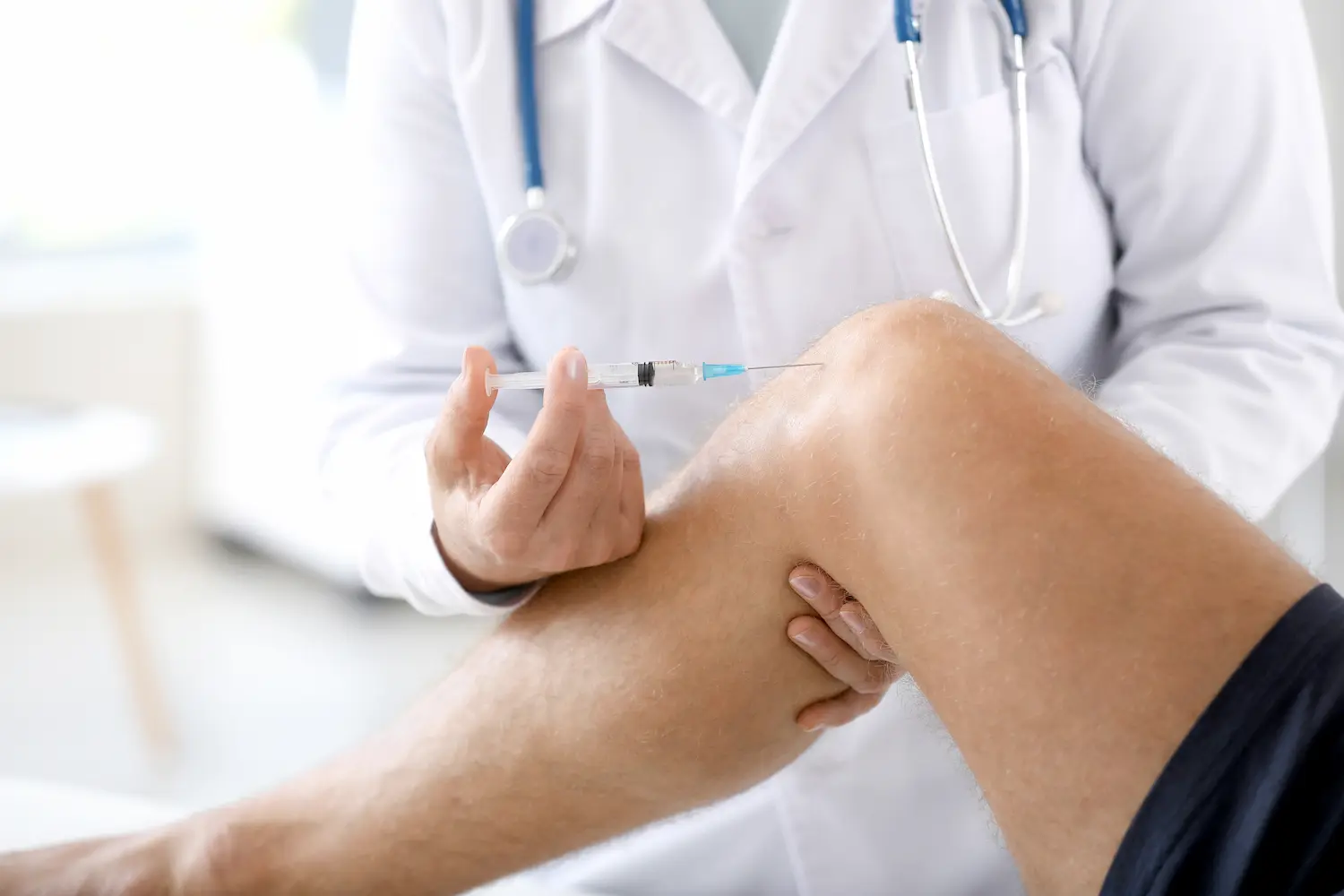Arthritis is a common condition that causes pain, stiffness, and decreased mobility for over 595 million people worldwide. As the condition progresses, individuals often seek various treatments to manage their symptoms and improve their quality of life.
Among the many options available, joint injections have emerged as a viable method for managing arthritis pain and enhancing mobility.
This blog explores the different types of joint injections, their benefits, potential risks, and what patients can expect during and after the procedure.
Understanding Arthritis and Its Impact
Arthritis is not a single disease; it is a term that covers over 100 medical conditions and related diseases that affect joints, the tissues that surround the joint, and other connective tissue.
The most common form is osteoarthritis, caused by the wear and tear of cartilage, leading to pain and stiffness in the affected joints.
Another prevalent form is rheumatoid arthritis, an autoimmune disorder that results in inflammation of the joint lining.
Regardless of the type, arthritis significantly impacts your daily activities and overall well-being.

The Role of Joint Injections in Arthritis Management
Joint injections are a treatment option that involves injecting medication directly into the affected joint. The primary goals of these injections are to reduce inflammation, alleviate pain, and improve joint function.
They can be particularly beneficial for individuals who have yet to respond well to other forms of treatment, such as oral medications or physical therapy.
Types of Joint Injections
Several types of joint injections can be used for arthritis treatment:
Corticosteroid Injections
Corticosteroid injections are among the most common joint injections for arthritis. These injections deliver powerful anti-inflammatory medication directly into the joint, relieving pain and swelling. The effects can last for several weeks to months, depending on the individual’s condition and response to the injection.
Hyaluronic Acid Injections
Hyaluronic acid injections, also known as viscosupplementation, are primarily used for treating osteoarthritis of the knee. Hyaluronic acid is a natural substance in the joint fluid that helps lubricate and cushion the joints. Injecting it into the knee can improve mobility and reduce pain.
Platelet-Rich Plasma (PRP) Injections
PRP injections involve using a concentration of a patient’s platelets to promote the healing of injured tendons, ligaments, muscles, and joints. This method can be used to treat various types of arthritis by enhancing the body’s natural healing process.
Benefits of Joint Injections
You can enjoy many benefits with joint injections for arthritis:
- Pain Relief: Joint injections can provide significant relief from arthritis pain, allowing individuals to participate in physical therapy and other activities that were previously too painful.
- Reduced Inflammation: By directly targeting the source of inflammation, these injections can reduce swelling and improve joint function.
- Minimal Side Effects: Compared to systemic medications, joint injections have fewer side effects since the medication is localised to the area of need.
- Improved Mobility: By reducing pain and inflammation, joint injections can help improve mobility and quality of life for those with arthritis.
Potential Risks and Considerations
While joint injections are generally safe, they are not without risks. Potential side effects include infection, allergic reactions, and injury to the joint or surrounding tissues.
Additionally, the effectiveness of joint injections can vary from person to person, and repeated injections may be necessary to maintain the benefits.
What to Expect During and After the Procedure
The procedure for administering a joint injection is relatively quick and is usually performed in a doctor’s office. The area around the joint is cleaned, and a local anaesthetic may be applied to minimise discomfort. Using imaging guidance, such as ultrasound, the doctor will inject the medication directly into the joint space.
After the injection, patients may experience temporary soreness or swelling at the injection site. It’s important to follow the doctor’s instructions for post-procedure care, which may include rest and avoiding strenuous activities for a short period.

Conclusion
Joint injections offer a promising option for managing arthritis pain and improving mobility. With various types available, including corticosteroids, hyaluronic acid, and PRP injections, individuals have multiple avenues to explore in consultation with their healthcare provider.
While not without risks, the benefits of joint injections—such as pain relief, reduced inflammation, and improved joint function—make them a valuable tool in the arthritis management toolkit.
Why Choose Us For Your Joint Injections For Arthritis
At MyHealthcare Clinic, we prioritise your joint health and comfort, offering expert care tailored to your unique needs.
Our team of medical professionals specialises in alleviating joint pain and enhancing the quality of life through advanced treatment options, including corticosteroid injections for arthritis and other joint-related conditions.
Embracing a personalised approach, we focus on your overall well-being, aiming to guide you back to an active and pain-free lifestyle. Trust us to be your dedicated partners in achieving optimal joint health. Book your joint injection appointment with us and let us be your partner in long-term pain relief.
Frequently Asked Questions
For more information on joint injections for arthritis read our most commonly asked questions:
What types of joint injections are available for arthritis at MyHealthcare Clinic?
MyHealthcare Clinic offers corticosteroid injections for arthritis treatment, targeting inflammation and pain relief.
What parts of the body can Corticosteroid injections be used for arthritis?
Corticosteroid injections can be used for arthritis in various body parts, including the knees, hips, shoulders, elbows, wrists, and small joints of the hands and feet. They are versatile treatments that can help reduce inflammation and pain in affected joints across the body.
How long do the effects of cortisone injections last?
The relief from cortisone injections can vary, typically lasting from weeks to months after treatment, with some patients experiencing significant improvement in symptoms during this period.
Are there any risks or side effects with joint injections?
Potential risks include infection, allergic reactions, and tissue damage, though these are generally rare.
Can anyone with arthritis have joint injections?
Not all arthritis patients are suitable for injections; eligibility depends on individual health conditions and arthritis severity.
How quickly can I expect to see improvement after a joint injection?
Improvements can be noticed as early as a few days post-injection, but the timeline varies based on the injection type and individual response.
